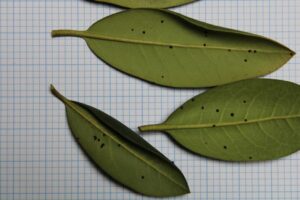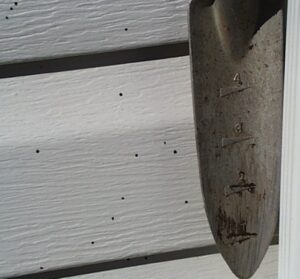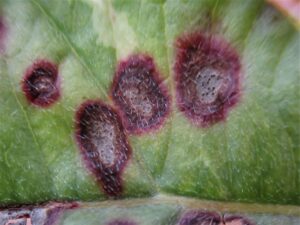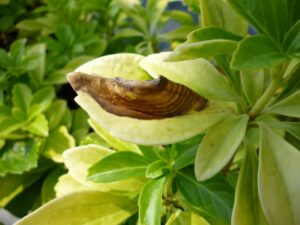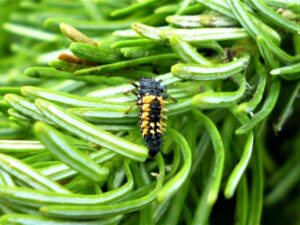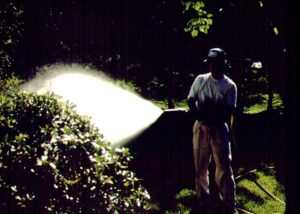Armored scales are generally regarded by green industry plant managers as being one of the more difficult insect pests to control. The Cryptomeria scale (Aspidiotus cryptomeriae ‘Kuwana’) is an armored scale that is notorious for being especially difficult to detect because of the translucent waxy cover. The elongate hemlock scale species resembles this scale, but it has a waxy cover that is caramel brown in color. Although the hosts of Cryptomeria scale can potentially include numerous conifer species, they are most typically found on hemlocks & pines in the landscape and on true firs in production situations such as Christmas tree farms. The damage potential is especially high on true firs.
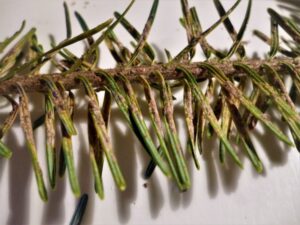
Signs of Cryptomeria scales beneath needles. (Photo: Steven K. Rettke, Rutgers Coop. Ext.)
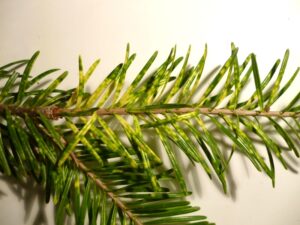
Chlorotic banding & mottling symptoms produced by Cryptomeria scales on Fraser fir (Photo: Steven K. Rettke, Rutgers Coop. Ext.)
